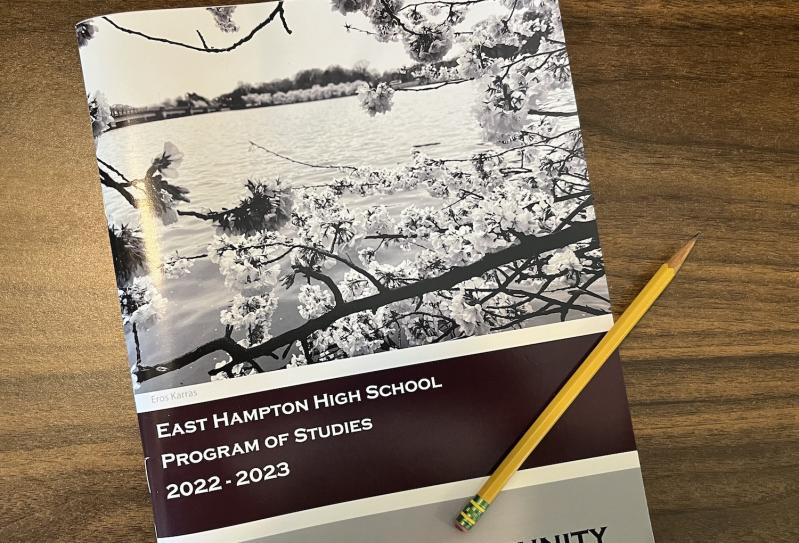At Pierson Middle and High School, students have the opportunity this year to take Latin American studies and African-American studies as electives. There’s a new math class, called geometry foundations, and sixth graders have been given the ability to take French after the school expanded its foreign language offerings.
At East Hampton High School, Bonac Broadcasting and mock trial classes were recently introduced, Advanced Placement psychology is back, architectural drawing is suddenly very popular, and enrollment in technology and career-related classes is booming.
Bridgehampton High School students are taking advantage of game design and film studies, thanks to the hiring of teachers with expertise in those areas, and there’s a new middle-school music class in Orff instrumental studies.
These are just a few of the ways that school districts here are shaping curriculums to respond to students’ evolving passions, needs, and career aspirations.
“Those are big-picture conversations that we have over the course of years to try and meet those student needs and interests,” Sara Smith, East Hampton’s high school principal, said in an interview.
Oftentimes it’s the students themselves who guide the requests for new classes, as was the case with Bonac Broadcasting at East Hampton and video game design and film studies at Bridgehampton. “It was quite obviously the kids speaking to us . . . and future plans drive a lot of the decisions,” said Jill Collins, an assistant principal at East Hampton High School.
At Pierson Middle and High School, Brittany Carriero, the principal, said in an email that Sag Harbor “provides students with a plethora of electives and core classes that are rigorous, yet culturally responsive.”
New course offerings “come from the school leadership team, district-level committee suggestions, etc. It is a pretty organic and collaborative process to ensure we meet our students’ needs,” Ms. Carriero said.
Danielle Doscher, director of the Bridgehampton School’s guidance department, pointed out that the expertise of individual teachers also plays into what courses and electives students can take.
“Every teacher brings something new and different to the table,” she said. “We do try to make accommodations if we have a student who is really set on studying a subject but we don’t have anything within the curriculum currently. We do make it happen.”
Online courses and independent study scenarios are often the result, she said, offering forensics and creative writing as recent examples.
This all creates, for the administrators, a massive jigsaw puzzle of graduation requirements, student requests, and teacher expertise and availability. The pieces must fit into a master schedule that allows students to earn all of their necessary credits for graduation.
“What’s always a good problem to have is students wanting to take everything,” Ms. Smith said. “We have a nine-period day, so that’s a testament to our students that they would love to take 12 classes a day or be in every science imaginable, but it’s always an exercise in priorities. What is it you’re most interested in? It’s an important process for them at that age to have to choose.”
On the horizon in New York State is a requirement for schools to develop an enhanced civics curriculum. The goal is to help students “make decisions and take actions for themselves, their communities, and public good as members of a culturally diverse, democratic society,” the State Education Department says.
“The state is sort of recognizing that there is a way for students to get graduation credits by giving back to their community, almost a school version of an Eagle Scout project,” she said. “The state has proposed that, and we will adopt it and that could potentially influence how we shape our ‘participation in government’ class. It will certainly shape our community service graduation requirement.”
Job market trends also emphasize the kinds of soft skills — communication, critical thinking, and teamwork, just to name a few — that are inherent in classes like mock trial, A.P. psychology, and methods in research at East Hampton, for instance.
The World Economic Forum reported in a 2016 study that “creativity will become one of the top three skills workers will need. With the avalanche of new products, new technologies, and new ways of working, workers are going to have to become more creative in order to benefit from these changes. Robots may help us get to where we want to be faster, but they can’t be as creative as humans (yet).”
The evolution of students’ scholastic options and teachers’ methods is seen as critical to future economies and societies that are inclusive, equitable, and adaptable.
“In many school buildings and curricula building hubs, a cognitive dissonance exists amongst our traditional approaches to instruction, what our students are actively interested in engaging with, and what our current job landscape reflects,” Aisha Douglas, an EdSurge Voices of Change fellow and academic dean at Achievement First Brooklyn High School, wrote in a March 2022 report. “There is a need for those of us in education to examine our biases around the perceived necessity for traditional instructional approaches. . . . The future of work and technology is continually shaping today’s students and how they can, and will, change our world.”
Ms. Doscher said that at Bridgehampton, “we do try to listen to student input, and then, absolutely, college and career readiness is very important” in the development of new core classes and electives.
Big-picture plans aside, school administrators here say it’s important that students have access to a wide range of classes to become well-rounded adults.
“Especially with the incorporation of these new career and technical education programs,” Ms. Collins said, “there is something for everybody.”

